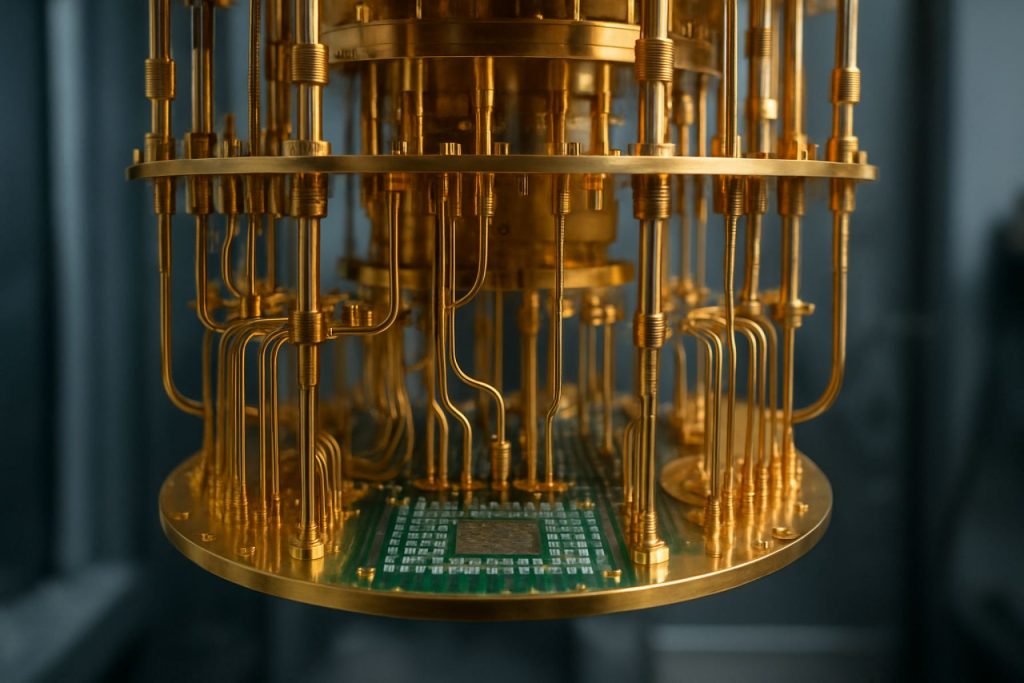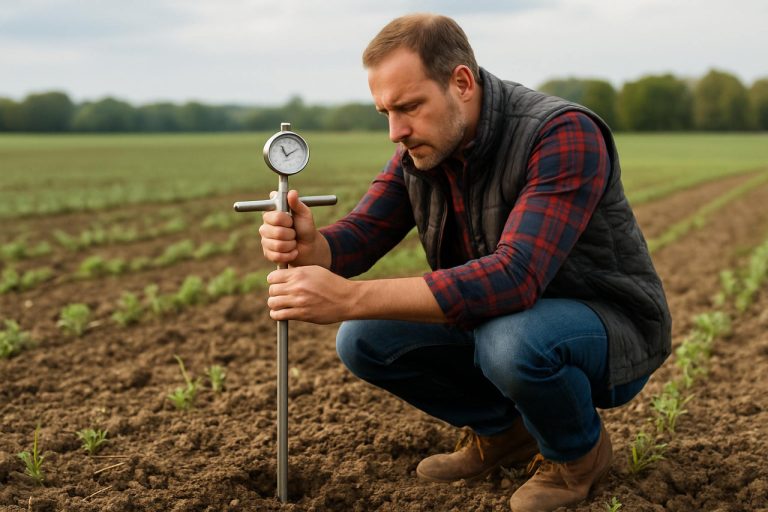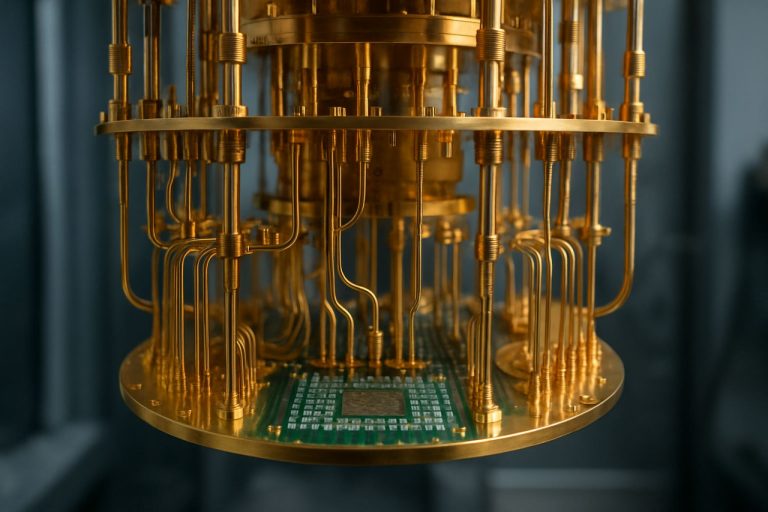
Unlocking the Power of Quantum Annealing Algorithms: How This Revolutionary Approach Is Transforming Complex Problem Solving. Discover the Science, Breakthroughs, and Real-World Impact Behind the Hype.
- Introduction to Quantum Annealing: Principles and Origins
- How Quantum Annealing Algorithms Work: A Technical Overview
- Key Differences Between Quantum Annealing and Classical Algorithms
- Breakthrough Applications: From Optimization to Machine Learning
- Major Challenges and Limitations in Quantum Annealing
- Recent Advances and Notable Research in Quantum Annealing
- Industry Adoption: Companies and Real-World Use Cases
- Future Prospects: What’s Next for Quantum Annealing Algorithms?
- Sources & References
Introduction to Quantum Annealing: Principles and Origins
Quantum annealing is a computational paradigm designed to solve complex optimization problems by leveraging quantum mechanical phenomena, particularly quantum tunneling and superposition. The core principle of quantum annealing algorithms is to encode a problem’s solution space into the ground state of a quantum system’s Hamiltonian. The system is initialized in the ground state of a simple, easily prepared Hamiltonian and then gradually evolved toward a final Hamiltonian that represents the problem of interest. If the evolution is sufficiently slow, the adiabatic theorem ensures that the system remains in its ground state, ideally yielding the optimal solution upon measurement Nature Physics.
The origins of quantum annealing trace back to the late 1990s, inspired by classical simulated annealing—a probabilistic technique that uses thermal fluctuations to escape local minima in optimization landscapes. Quantum annealing extends this concept by exploiting quantum fluctuations, which can tunnel through energy barriers that would trap classical algorithms, potentially offering a computational advantage for certain problem classes Elsevier. Early theoretical work established the mathematical framework for adiabatic quantum computation, which underpins quantum annealing, and subsequent research has explored its practical implementation on specialized hardware, such as quantum annealers developed by D-Wave Systems Inc..
Today, quantum annealing algorithms are actively researched for applications in combinatorial optimization, machine learning, and material science. While the full extent of their computational advantage remains an open question, ongoing advances in both theory and hardware continue to shape the field’s evolution Nature Physics.
How Quantum Annealing Algorithms Work: A Technical Overview
Quantum annealing algorithms are designed to solve complex optimization problems by exploiting quantum mechanical phenomena, particularly quantum tunneling and superposition. The process begins by encoding the optimization problem into a mathematical form known as a Hamiltonian, where the lowest energy state (ground state) corresponds to the optimal solution. The system is initialized in a simple quantum state, typically the ground state of an initial Hamiltonian that is easy to prepare. Over time, the algorithm gradually transforms this initial Hamiltonian into the problem Hamiltonian through a process called adiabatic evolution.
During this evolution, the system remains in its ground state if the transformation is slow enough, as dictated by the adiabatic theorem. Quantum tunneling allows the system to traverse energy barriers that would trap classical algorithms in local minima, increasing the likelihood of finding the global minimum. The annealing schedule—the rate at which the Hamiltonian changes—is critical; too rapid a change can cause the system to exit the ground state, leading to suboptimal solutions.
Quantum annealing is typically implemented on specialized hardware, such as the quantum processors developed by D-Wave Systems Inc., which use superconducting qubits to physically realize the annealing process. These devices are engineered to minimize environmental noise and decoherence, which can disrupt the quantum state and reduce solution quality. The performance of quantum annealing algorithms is highly dependent on problem structure, hardware connectivity, and noise resilience, making ongoing research into error correction and improved annealing schedules essential for advancing practical applications Nature.
Key Differences Between Quantum Annealing and Classical Algorithms
Quantum annealing algorithms differ fundamentally from classical algorithms in their approach to solving optimization problems. Classical algorithms, such as simulated annealing or branch-and-bound, rely on thermal fluctuations or systematic search strategies to explore the solution space. In contrast, quantum annealing leverages quantum mechanical phenomena—most notably quantum tunneling and superposition—to traverse energy landscapes and escape local minima more efficiently. This quantum behavior allows the system to potentially find lower-energy solutions that classical methods might miss, especially in rugged or high-dimensional landscapes.
Another key distinction lies in the representation and manipulation of information. Classical algorithms operate on bits, which exist in definite states (0 or 1), while quantum annealing algorithms use qubits that can exist in superpositions of states. This enables quantum annealers to process a vast number of possible solutions simultaneously, offering a form of parallelism not available to classical systems. However, the practical advantage of this parallelism depends on the problem structure and the quality of the quantum hardware.
Additionally, the computational complexity and scaling behavior of quantum annealing can differ from classical approaches. For certain classes of problems, such as those with complex energy landscapes or high levels of frustration, quantum annealing may offer polynomial or even exponential speedups, though this is still an area of active research and debate. The performance of quantum annealing is also influenced by noise, decoherence, and hardware limitations, which can impact solution quality and reliability D-Wave Systems Inc., Nature. In summary, while both paradigms aim to solve optimization problems, their underlying mechanisms and potential advantages are markedly different.
Breakthrough Applications: From Optimization to Machine Learning
Quantum annealing algorithms have demonstrated significant potential in addressing complex computational problems, particularly in the domains of combinatorial optimization and machine learning. In optimization, these algorithms excel at finding near-optimal solutions to problems that are otherwise intractable for classical computers, such as the traveling salesman problem, graph partitioning, and portfolio optimization. By leveraging quantum tunneling and superposition, quantum annealers can escape local minima more efficiently than classical simulated annealing, leading to improved solution quality for large-scale, rugged energy landscapes D-Wave Systems Inc..
In machine learning, quantum annealing has been applied to tasks such as training Boltzmann machines, clustering, and feature selection. For example, quantum annealers can be used to sample from complex probability distributions, which is a core challenge in training generative models like restricted Boltzmann machines. This capability has led to research into quantum-assisted machine learning, where quantum annealers are used as subroutines within classical algorithms to accelerate convergence or enhance sampling quality Nature Quantum Information.
Recent breakthroughs include hybrid quantum-classical algorithms, where quantum annealers tackle the most computationally intensive subproblems, while classical processors handle the remainder. This approach has shown promise in logistics, drug discovery, and financial modeling, where the scale and complexity of the problems benefit from quantum speedup IBM Quantum. As hardware matures and algorithmic techniques advance, quantum annealing is poised to play a transformative role across a broad spectrum of real-world applications.
Major Challenges and Limitations in Quantum Annealing
Quantum annealing algorithms, while promising for solving complex optimization problems, face several significant challenges and limitations that currently restrict their practical utility. One of the primary issues is the presence of noise and decoherence in quantum hardware. Quantum annealers, such as those developed by D-Wave Systems Inc., operate at extremely low temperatures to maintain quantum coherence, but even minor environmental disturbances can disrupt the delicate quantum states, leading to errors in computation.
Another major limitation is the restricted connectivity of qubits in existing quantum annealers. Most current devices use a specific hardware graph (e.g., Chimera or Pegasus), which often requires complex minor embedding of the problem graph onto the hardware. This process can introduce significant overhead, reducing the effective number of qubits available for computation and potentially degrading solution quality Nature Quantum Information.
Additionally, quantum annealing is best suited for problems that can be mapped to the Ising model or Quadratic Unconstrained Binary Optimization (QUBO) form. Many real-world problems do not naturally fit these formulations, necessitating further transformations that may increase problem size and complexity National Institute of Standards and Technology.
Finally, there is an ongoing debate about the quantum speedup offered by quantum annealing algorithms. While some studies suggest potential advantages over classical algorithms, clear and consistent evidence of substantial speedup for practical problems remains elusive American Association for the Advancement of Science. These challenges highlight the need for continued research in both hardware and algorithmic development to fully realize the potential of quantum annealing.
Recent Advances and Notable Research in Quantum Annealing
Recent years have witnessed significant progress in the development and application of quantum annealing algorithms, driven by both theoretical advancements and the increasing availability of quantum annealing hardware. Notably, researchers have refined algorithmic techniques to better exploit the unique properties of quantum annealers, such as leveraging non-stoquastic Hamiltonians to potentially enhance tunneling rates and escape local minima more efficiently than classical counterparts. This has led to the exploration of hybrid quantum-classical algorithms, where quantum annealers are integrated with classical optimization routines to solve complex combinatorial problems more effectively.
A prominent area of research focuses on benchmarking quantum annealing against classical algorithms. Studies by Nature and Science have provided evidence that, for certain problem instances such as spin glasses and constraint satisfaction problems, quantum annealers can demonstrate speedups or unique solution strategies. Additionally, the introduction of reverse annealing and inhomogeneous driving protocols has expanded the versatility of quantum annealing, enabling more targeted searches and improved performance on real-world optimization tasks.
Recent research also emphasizes the importance of error mitigation and noise resilience, as current quantum annealers are susceptible to decoherence and control errors. Techniques such as error correction codes and robust embedding strategies are being actively developed, as highlighted by Nature Quantum Information. Furthermore, the application landscape for quantum annealing continues to broaden, with notable progress in fields like logistics, machine learning, and material science, as demonstrated by collaborative efforts between academia and industry, including D-Wave Systems Inc..
Industry Adoption: Companies and Real-World Use Cases
Quantum annealing algorithms have moved beyond theoretical research and are now being explored and adopted by leading companies across various industries. One of the most prominent adopters is D-Wave Systems, which has developed commercial quantum annealers and collaborates with organizations to solve complex optimization problems. For example, Volkswagen AG has partnered with D-Wave to optimize traffic flow in cities, using quantum annealing to process vast amounts of real-time data and suggest optimal routes for vehicles.
In the financial sector, JPMorgan Chase & Co. and Goldman Sachs are investigating quantum annealing for portfolio optimization and risk analysis, aiming to outperform classical algorithms in speed and solution quality. Similarly, Tokyo Metro has utilized quantum annealing to optimize train scheduling, reducing congestion and improving efficiency.
In logistics, FedEx is exploring quantum annealing to enhance package routing and delivery schedules. The energy sector is also leveraging these algorithms; Enel has piloted quantum annealing for grid optimization and energy distribution.
These real-world use cases demonstrate that quantum annealing algorithms are not only of academic interest but are also being integrated into practical solutions, driving innovation and efficiency in diverse sectors. As hardware matures and hybrid quantum-classical approaches evolve, industry adoption is expected to accelerate further.
Future Prospects: What’s Next for Quantum Annealing Algorithms?
The future of quantum annealing algorithms is poised for significant advancements, driven by both hardware improvements and algorithmic innovations. As quantum annealers scale up in qubit count and connectivity, they are expected to tackle increasingly complex optimization problems that are currently intractable for classical computers. One promising direction is the integration of error mitigation techniques and hybrid quantum-classical frameworks, which can enhance solution quality and robustness in the presence of noise and hardware imperfections. For instance, combining quantum annealing with classical pre- and post-processing steps has already shown potential in improving performance on real-world applications such as logistics, finance, and machine learning optimization tasks (D-Wave Systems Inc.).
Another key area of development is the exploration of new problem mappings and encoding strategies, enabling a broader class of problems to be efficiently represented on quantum annealers. Research is also focusing on the development of more sophisticated annealing schedules and non-stoquastic Hamiltonians, which may help overcome some of the limitations of current devices and potentially achieve quantum speedup for specific problem classes (Nature Physics).
Looking ahead, the convergence of quantum annealing with other quantum computing paradigms, such as gate-based quantum computers, could lead to hybrid algorithms that leverage the strengths of both approaches. As the field matures, standardization of benchmarking practices and the creation of open-source software tools will further accelerate progress and adoption (National Institute of Standards and Technology). Overall, the next decade is likely to see quantum annealing algorithms transition from experimental prototypes to practical tools for solving real-world optimization challenges.
Sources & References
- Nature Physics
- D-Wave Systems Inc.
- IBM Quantum
- National Institute of Standards and Technology
- Volkswagen AG
- JPMorgan Chase & Co.
- Goldman Sachs
- Enel



